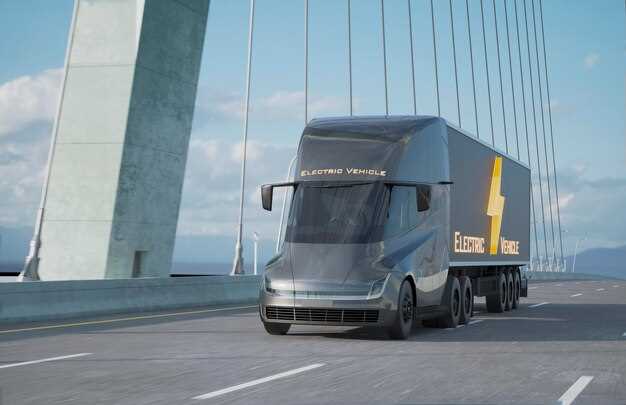
The electric truck market is poised for significant transformation in 2024, driven by advancements in technology and increased demand for sustainable transportation solutions. As major players in the automotive industry continue to invest heavily in electric vehicle (EV) technology, several key innovations are anticipated to reshape the landscape of electric trucking. This article delves into what can be expected in the coming year, focusing on the most promising developments and trends that will impact the industry.
Anticipated improvements in battery technology, including increased energy density and faster charging capabilities, are expected to enhance the overall performance and efficiency of electric trucks. Companies are racing to develop batteries that not only extend the range of these vehicles but also reduce charging time significantly, making electric trucks more viable for long-haul transportation. Range anxiety, a common concern among potential users, is likely to diminish as these innovations roll out.
In addition to battery enhancements, advancements in autonomous driving technology are set to revolutionize electric trucking in 2024. The integration of sophisticated AI systems and advanced sensors will improve safety and efficiency, allowing for greater operational flexibility. Fleet operators will benefit from increased productivity, cost savings, and reduced environmental impact. Moreover, collaborations between technology firms and traditional automotive manufacturers will accelerate the pace of these innovations, fostering a competitive yet collaborative environment.
Advancements in Battery Technology for Electric Trucks
As the demand for electric trucks continues to rise, significant advancements in battery technology are essential for improving range, efficiency, and overall performance. One of the most promising developments is the introduction of solid-state batteries, which utilize a solid electrolyte instead of the conventional liquid electrolyte found in lithium-ion batteries. This innovation enhances safety by reducing the flammability risk and increases energy density, allowing for longer drives between charges.
Another notable advancement is the progress in lithium-silicon anodes. Unlike traditional graphite anodes, lithium-silicon composites can store more lithium ions, potentially tripling the energy capacity of batteries. This leap in technology could lead to electric trucks with greater range and lower charging times, addressing one of the most significant barriers to widespread adoption.
Additionally, fast charging technology has seen remarkable improvements. With the development of ultrafast charging systems, electric trucks can potentially recharge up to 80% of their battery capacity in just 30 minutes. This capability not only reduces downtime but also makes electric trucks more viable for long-haul transportation.
Moreover, advancements in thermal management systems are crucial for battery performance. With improved cooling techniques, batteries can operate at optimal temperatures, preventing overheating and extending their lifespan. This ensures reliability and efficiency, especially in heavy-duty applications.
Lastly, battery recycling technologies are evolving to complement new innovations. Efficient recycling processes can reclaim valuable materials, reducing environmental impact and addressing the supply chain concerns for critical battery components. As technology progresses, the focus on sustainability and resource management will play a pivotal role in the electric truck industry.
In summary, breakthroughs in solid-state batteries, lithium-silicon anodes, fast charging solutions, thermal management, and recycling initiatives are collectively shaping the future of electric trucks. These innovations not only enhance performance and reliability but also contribute to the transition towards greener transportation solutions.
Integration of Autonomous Features in Electric Truck Designs

The integration of autonomous features into electric truck designs is set to revolutionize the logistics and transportation industries in 2024. With advancements in artificial intelligence, sensor technology, and machine learning, electric trucks are increasingly equipped with capabilities that enhance safety, efficiency, and operational cost-effectiveness.
One of the primary innovations in this area is the development of advanced driver-assistance systems (ADAS). These systems utilize a combination of radar, cameras, and lidar to provide functionalities such as adaptive cruise control, lane-keeping assistance, and automatic emergency braking. These features not only improve safety but also facilitate a smoother driving experience, reducing driver fatigue on long hauls.
Another significant advancement is the implementation of fully autonomous driving capabilities. Manufacturers are investing heavily in technologies that enable trucks to navigate complex environments without human intervention. This includes the use of high-definition maps combined with real-time data processing to detect and respond to obstacles and traffic conditions. As more fleets adopt fully autonomous vehicles, the potential for 24/7 operations becomes a reality, leading to increased productivity.
Furthermore, the integration of AI-based route optimization tools is essential for maximizing efficiency. These tools analyze traffic patterns, weather conditions, and delivery schedules to generate the most time- and cost-efficient routes. By optimizing routes, electric trucks can minimize energy consumption and reduce operational costs significantly while maintaining timely deliveries.
Cybersecurity also plays a crucial role in the integration of autonomous functions. As electric trucks become more connected, they become potential targets for cyber threats. Ensuring robust cybersecurity measures will be vital for protecting sensitive data and maintaining the integrity of autonomous systems, which could be disrupted by external malicious activities.
Finally, collaboration between industry stakeholders, including manufacturers, tech developers, and regulatory bodies, is critical to facilitate the safe and effective deployment of these autonomous features. As regulations evolve to accommodate new technologies, proactive engagement will help in shaping standards and practices that ensure public trust and acceptance of autonomous electric trucks.
Impact of Regulatory Changes on the Electric Truck Market

The electric truck market is undergoing significant transformation, heavily influenced by a range of regulatory changes. These changes are designed to promote environmental sustainability, reduce carbon emissions, and enhance energy efficiency. As we approach 2024, several key regulatory trends are shaping the landscape of electric trucks.
- Emission Standards: Stricter emission regulations are being implemented globally. Government agencies are mandating lower greenhouse gas emissions for heavy-duty vehicles, pushing manufacturers to accelerate their electric truck offerings. Compliance with these standards is crucial for market survival.
- Incentives and Subsidies: Many governments are providing financial incentives for electric vehicle adoption, including tax credits, rebates, and grants. These financial supports lower the initial cost of electric trucks, encouraging more fleet operators to make the switch.
- Infrastructure Development: Regulatory frameworks are increasingly focused on building necessary infrastructure for electric vehicles. This includes investments in charging stations and energy supply chains, facilitating easier access for electric trucks and enhancing their practicality.
- Zero Emission Zones: Many cities are establishing zero-emission zones where only electric or low-emission vehicles are allowed. This regulatory trend will further drive demand for electric trucks, as fleet operators seek to comply with new restrictions on traditional diesel trucks.
- Safety Regulations: Safety standards specific to electric trucks are being established, focusing on battery safety and vehicle performance. These regulations are vital for ensuring public trust in electric trucks and thereby fostering market growth.
The cumulative effect of these regulatory changes is a significant push towards the adoption of electric trucks. Manufacturers are not only innovating in technology but are also aligning their production with regulatory compliance to ensure competitiveness in this rapidly evolving market.
In conclusion, as legislation continues to evolve, its impact on the electric truck market will be profound, fostering an environment ripe for innovation and growth while addressing critical environmental concerns.



